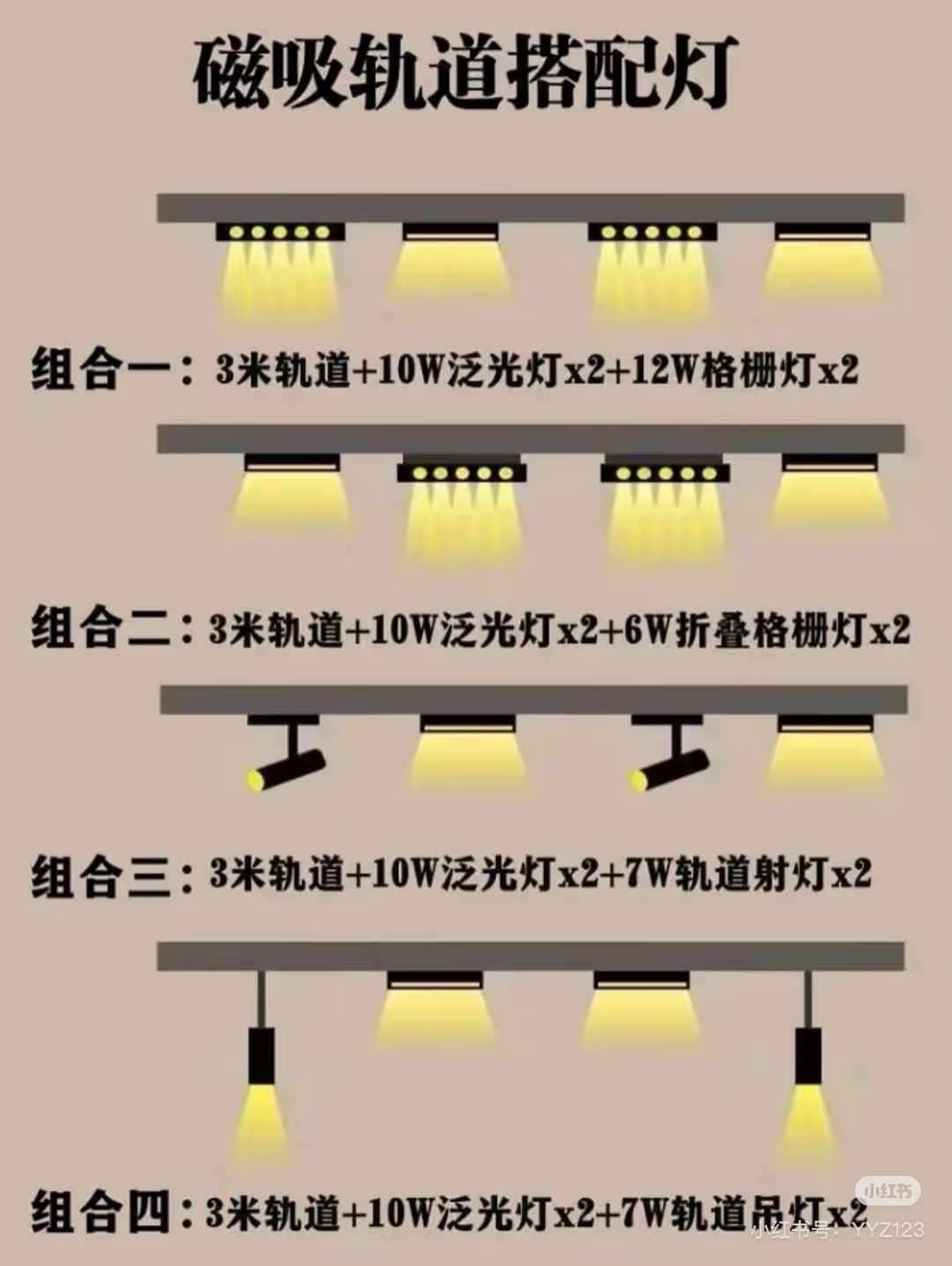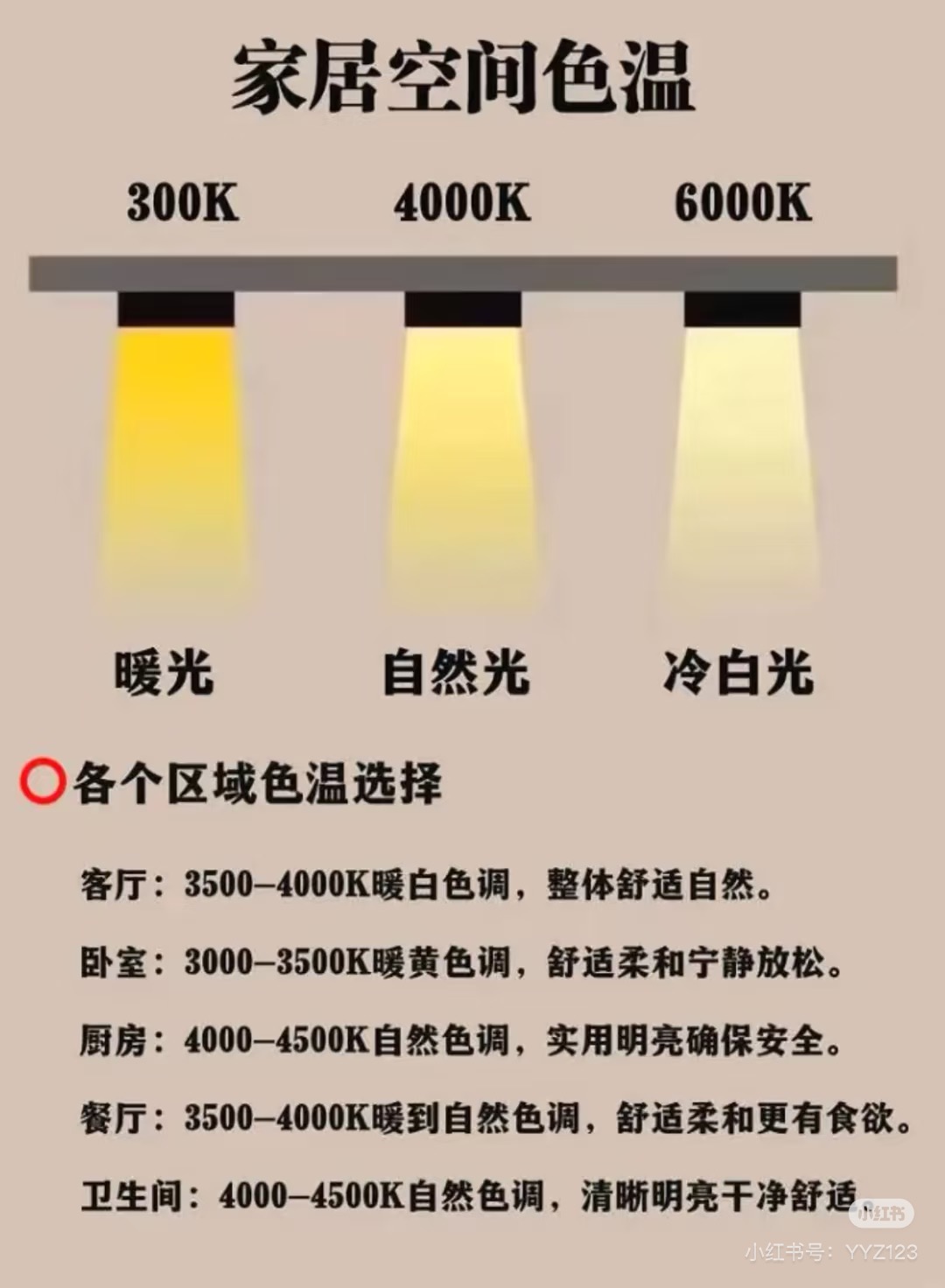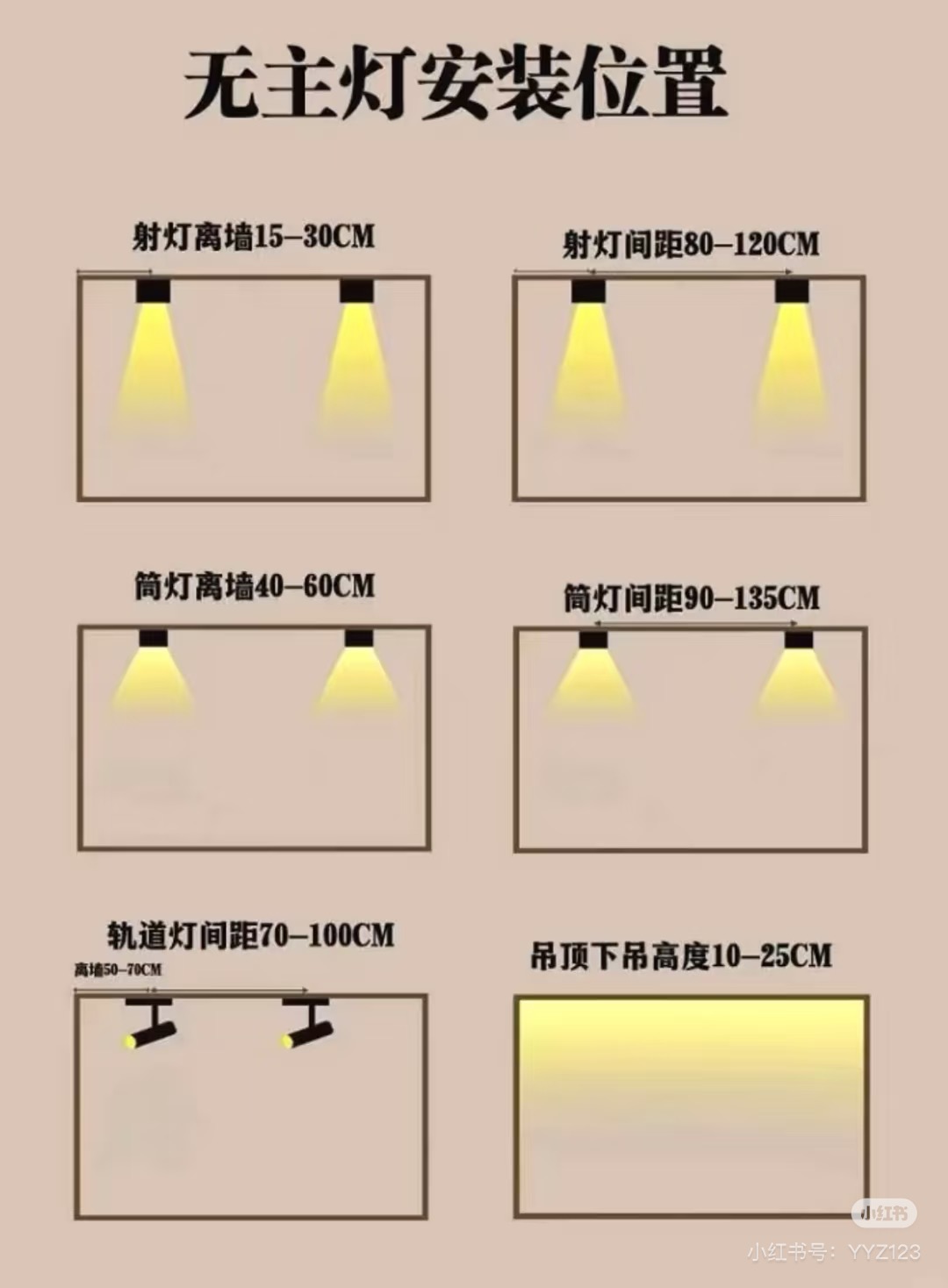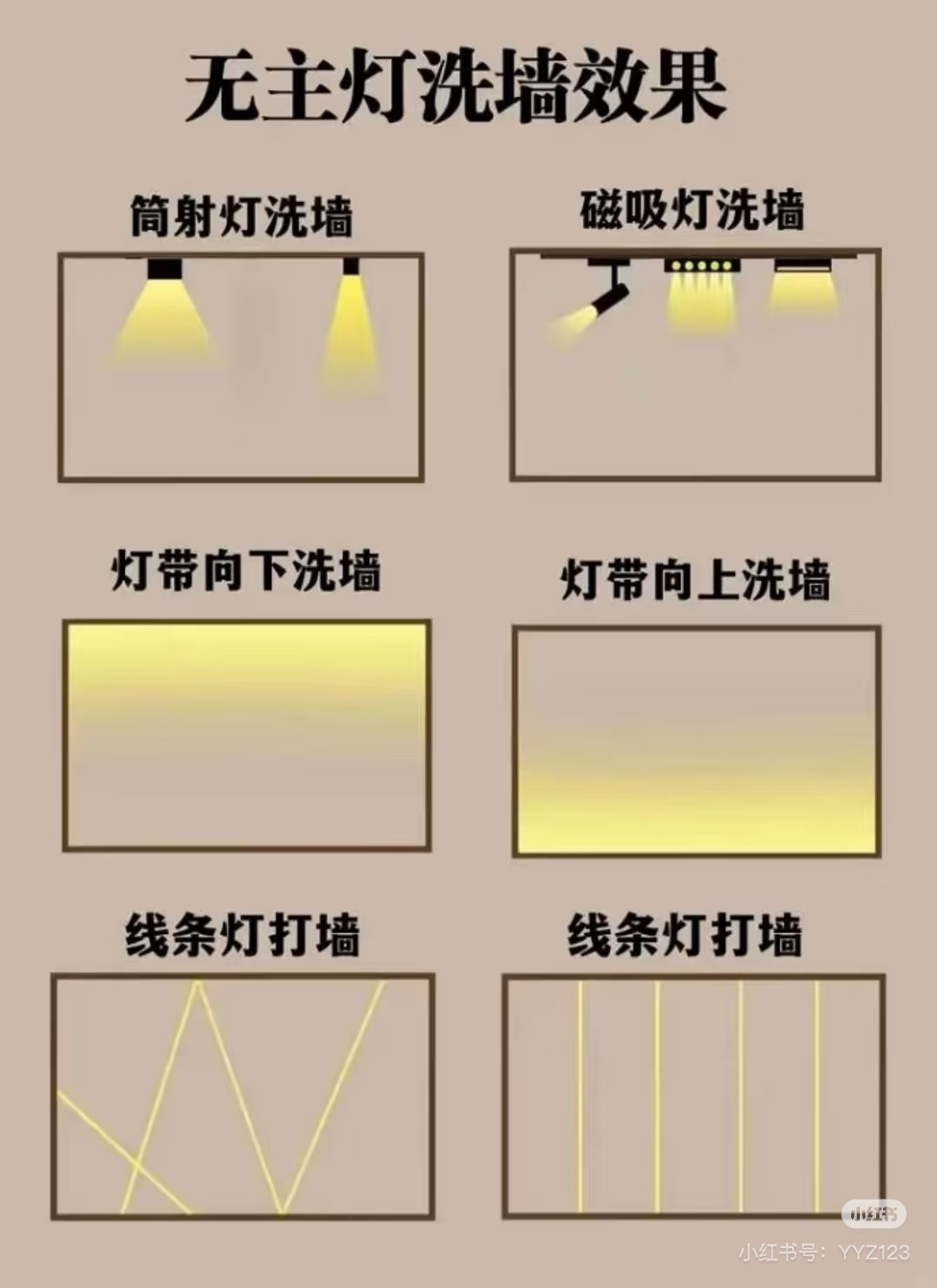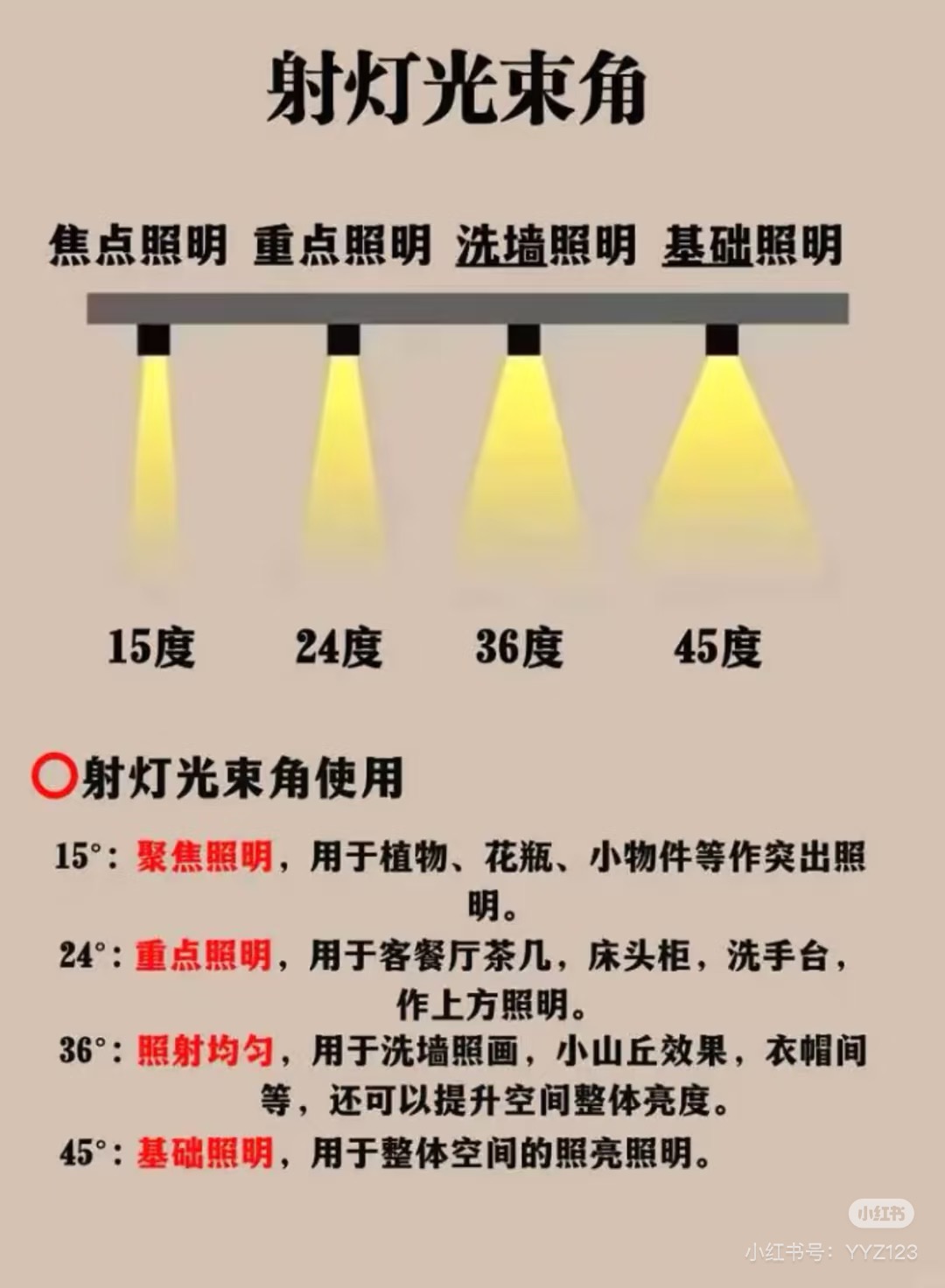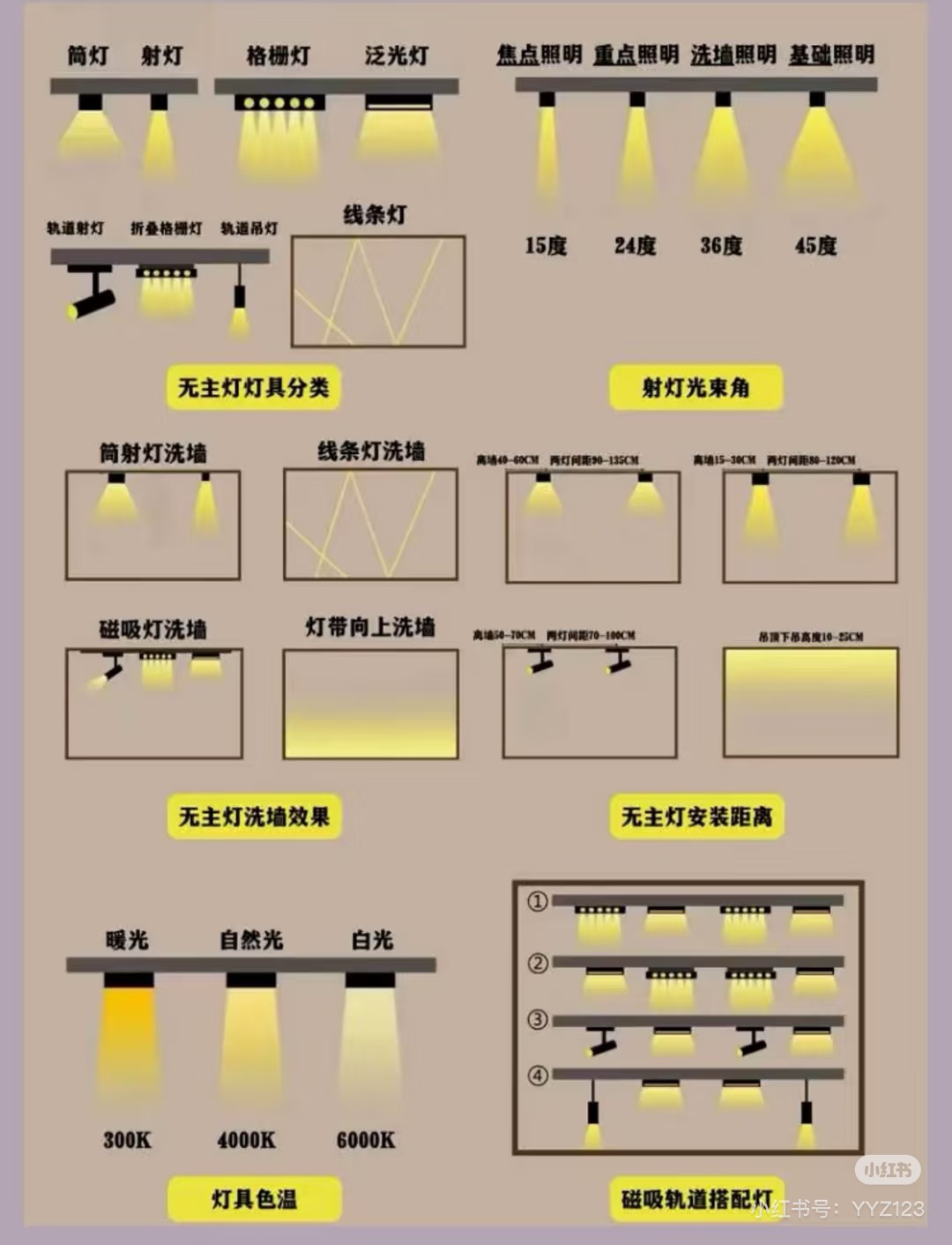Subheading: Recommended Installation Distances for Primary-Less Lighting Systems
Spotlights: Distance from wall: 15-30cm. Spacing between fixtures: 80-120cm.
Downlights: Distance from wall: 40-60cm. Spacing between fixtures: 90-135cm.
Track lights: Distance from wall: 50-70cm. Spacing between fixtures: 70-100cm.
Linear lights: Drop height from ceiling: 10-25cm.
Subheading: Suggested Color Temperature for Home Lighting
Living room: Warm white tone (3500-4000K), ensuring overall comfort and natural ambiance.
Bedroom: Warm yellow tone (3000-3500K), creating a cozy, atmospheric feel.
Kitchen: Natural tone (4000-4500K), enhancing brightness and safety for food preparation.
Dining area: Warm to natural tone (3500-4000K), boosting appetite and dining pleasure.
Bathroom: Natural tone (4000-4500K), ensuring clarity, brightness, and cleanliness.
Subheading: Magnetic Track Lighting Combination Strategies
Option 1: 3-meter track paired with two 10W floodlights and two 12W grid spotlights.
Option 2: Combine two floodlights and two foldable grid spotlights.
Option 3: Pair two floodlights and two track-mounted spotlights.
Option 4: Match two floodlights and two track pendant lights.
Expanded Section: A Systematic Guide to Home Lighting Design with Track Lights and Spotlights
1. Core Functional Positioning of Track Lights and Spotlights
Track lights: As a modular lighting system, their core value lies in flexible adjustments and combinatory freedom. With magnetic tracks (typically 24V low-voltage design), they can support floodlights, grid spotlights, pendant lights, and other modules, enabling dynamic switching between ambient, accent, and decorative lighting. For example:
Floodlight modules (beam angle 45°-60°): Provide uniform ambient illumination, replacing traditional downlights.
Foldable grid spotlights (beam angle 24°-36°): Used for wall washing or highlighting artwork, producing clear "hill and dale" light patterns.
Spotlights: Excel at precise focus and scene rendering, with key parameters including:
Beam angle: 15° (pinpoint lighting, e.g., for ornaments), 24° (accent lighting for tables), 36° (optimal for wall washing).
Shielding angle: ≥45° prevents direct glare; deep-cup design (depth ≥5cm) with honeycomb anti-glare mesh significantly enhances visual comfort.
2. Golden Rules for Primary-Less Lighting Layout
(1) Scientific Basis for Distance and Spacing
Fixture Type Wall Distance Fixture Spacing Design Principles and Scenario Validation Spotlights 15-30cm 80-120cm Distance <30cm ensures >70% light pattern overlap for seamless wall washing; >30cm reduces center intensity, ideal for localized accents. Downlights 40-60cm 90-135cm Wide beam angle (85°) requires more diffusion space, suitable for corridors or kitchens. Track lights 50-70cm 70-100cm Track at 60cm with 30° tilt covers wall heights up to 2.5m for uniform "wall grazing" effects. Linear lights Drop 10-25cm Continuous Drop <15cm offers soft, uncut lighting; >20cm needs higher density to avoid dark zones. Practical Techniques:
Wall washing optimization: Install spotlights with a "grazing not casting" principle; adjust to 30° angle for diffuse light, eliminating harsh spots.
Glare avoidance in pathways: Fixture spacing >80cm ensures eyes stay in the shielded zone (below the 45° tangent line).
3. Science and Ergonomics of Color Temperature Selection
Match color temperature to circadian rhythms and functional needs:
Living room (3500-4000K): Warm white enhances textures like leather or wood while maintaining Ra>90 CRI for reading.
Bedroom (3000-3500K): Low temperature boosts melatonin; pair with dimming systems (flicker-free, 1%-100%) for nighttime ease.
Kitchen/Bathroom (4000-4500K): High CRI (Ra≥95) shows true colors; cool white improves safety for tasks.
Key note: Limit temperature deviation to <300K per space to prevent eye strain from color jumps.
4. Advanced Matching Strategies for Magnetic Track Lighting
Using a 3-meter track as a base, here are scene-based combinations:
| Combination | Configuration | Application | Light Effect Characteristics |
|---|---|---|---|
| All-purpose Base | 10W floodlights ×2 + 12W grid spotlights ×2 | Living room lighting | Floodlights cover 60% area; grid lights accent sofas or décor. |
| Art Gallery | 10W floodlights ×2 + foldable grid spotlights ×2 | Feature walls or galleries | Angle-adjustable lights target art with symmetric patterns. |
| Dining Ambiance | 10W floodlights ×2 + track spotlights ×2 | Dining table focus | 24° beam spotlights on place settings; CRI>95. |
| Vertical Space | 10W floodlights ×2 + track pendants ×2 | LOFT ceilings or low-height areas | Adjustable drop height supplements mid-low lighting. |
| Installation tips: |
Reserve 2cm expansion gaps at track joints to counter thermal contraction.
Hide transformers in ceiling accesses or cabinets to minimize bulk.
5. Anti-Glare and Visual Health Optimization
Optical anti-glare: Use deeply recessed designs (source depth-to-aperture ratio ≥1:1.5), e.g., Orvibo Q3 spotlights achieve UGR <16 (international threshold) with stepped glare reduction.
Smart controls: Integrate motion sensors and light sensors; automatically reduce power to 30% during daytime and switch to 1800K candlelight mode for nighttime movement.
Conclusion: The Dual Logic of Lighting Design
The synergy of track lights and spotlights is about controlling light environments and managing spatial moods. From millimeter-level distance calibrations to circadian-based temperature zoning and the freedom of magnetic systems, each step balances engineering precision with human sensation. Ultimately, it achieves "light concealed in form, ambiance born from light" – the pinnacle of design.




